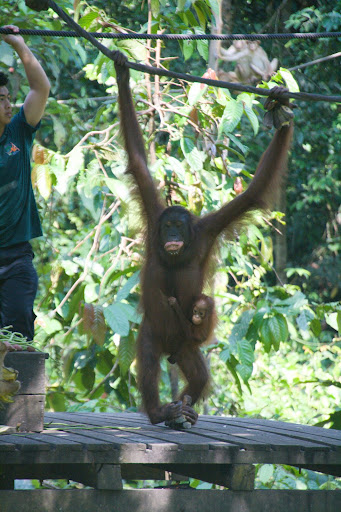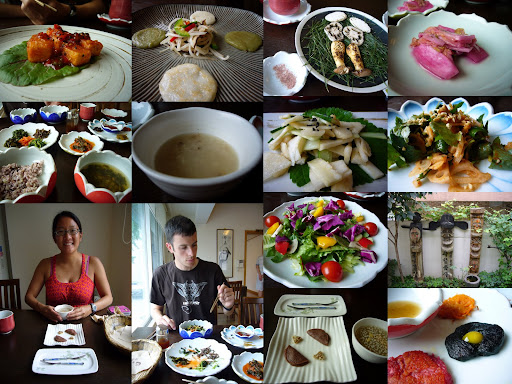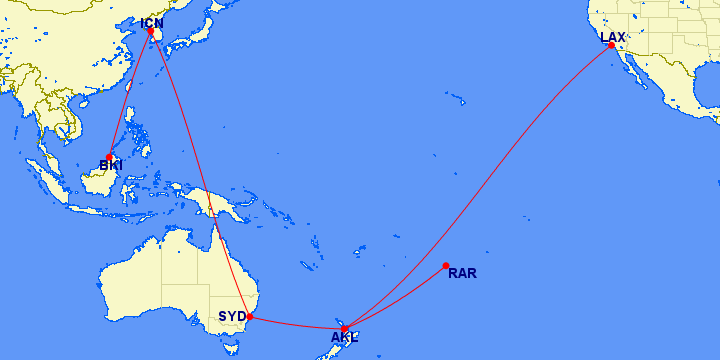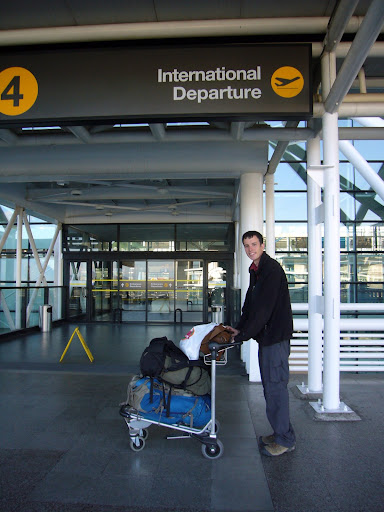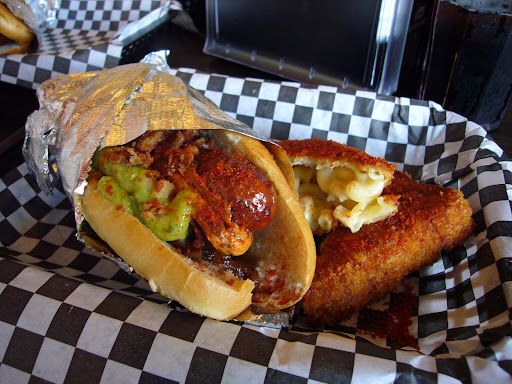At the far eastern end of Sabah lies the town of Semporna, the gateway to Tun Sakaran Marine Park. The park, which includes Sipadan Island, is widely regarded as one of the world’s best dive sites. We arrived in Semporna on a hot and humid afternoon and without any specific plans as to how to visit the park or where to stay. Finding some accommodations was pretty easy even through the tourist season is in full swing. After some food, we dropped off our laundry at the laundromat and went shopping for a dive operator.
Most of the dive outfits have accommodations on islands in the park that you are allowed to use if you book dives and/or courses. Mabul Island is the most popular and the most highly recommended places to stay (at least in the budget category) were booked up. We came across a place called Singamata Reef Resort that seemed to be a nice alternative. Instead of being on one of the islands in the park, it is located on a reef a few miles offshore from Semporna. Their prices were reasonable (US$33 per person per night, full-board provided) and they still operated dive trips to the park.
We wanted to escape Semporna the very next day but our laundry wasn’t ready yet so we were forced to stay another night. Laundry places in Malaysia are full service – you can’t wash your clothes yourself even if you want to! Semporna isn’t exactly the nicest of Malaysian towns so we mostly hid out in our hotel room (with AC!). The main activity for that day was a lunchtime visit to the open-air food market. Semporna itself didn’t seem to have all that many restaurant options. Maybe that was because it was Ramadan, or maybe that is because we didn’t know where to look.
The food-market had quite a bit to offer. There were numerous drink vendors whose beverage selection covered every color of the rainbow. There were also quite a few vendors with grills covered in fish and chicken. Personally, I ended up grabbing a vegetable murtabak which is a stuffed roti served with curry. Roti is a flakey flatbread made of flour and ghee that is cooked on a grill. I also noticed that quite a few stalls were cooking up large pancake-looking things that were filled with peanuts. To drink, I got a plastic bag of super sweet orange juice. The problem with the market was that there was no place to sit and enjoy your food – it was purely a takeaway operation so we headed back to the hotel room and I very carefully tried to eat my murtabak and curry without spilling it all over the place. A tasty lunch for about a buck.
The next morning we reported in at the Singamata office at 8am for the morning boat departure. The ride out to the resort was less than 10 minutes and they quickly showed us to our room in one of the stilt-houses. Amy and I chatted with a Swiss couple who were staying a few doors down and we learned that they were both dive masters staying at the resort. For those unfamiliar, the basic setup for dive masters is they get free housing in exchange for leading dive trips. It’s a good way to do lots of diving on the cheap but of course you have to pay for all those certifications first!
At Singamata there are a couple of options for diving. First you can just go diving at the “house reef” which is literally just below the resort. These dives cost RM80 (US$27) and can be made more or less spontaneously, subject to dive master availability. The second option is one of the full-day island trips where you get three dives, lunch, and boat transfer for RM300 (US$100).
Since it had been many years since my last dive, the dive masters recommended a check-out dive for the house reef that afternoon. Four of us went that day, two dive masters (Eric and Nat from Switzerland) and another diver (also Swiss, I think). We dove to about 12m and had a poke around for 41 minutes. The coral in that area isn’t all that spectacular but as a “muck diving” site there was lots to see – mainly small creatures like shrimp and colorful nudibranch. One of the dive masters has an underwater camera so I am happy to be able to share some photos from the dive. Given our proximity to the town, visibility was quite good – around 10m.
On the second day we had hoped to do a three-dive day trip. The weather overnight was absolutely miserable. Violent thunderstorms, strong winds and plenty of rain. When we rose it was still drizzling and windy and I didn’t feel comfortable going out to one of the islands, particular if lightning was a possibility. We stayed behind and I completed another house dive late in the afternoon.
On day 3 the weather improved and we took the full-day trip to Sibuan Island. The boat ride out was about 40 minutes and we completed two of the dives before the lunch break. Amy split her time between snorkeling off the beach of the island and snorkeling from the boat when it took us to dive sights. For me, the best experience of the day was getting to swim alongside of a huge green sea turtle (3-4 feet across the shell) while he/she grazed on the bottom. Amy also managed to spot a sea turtle while snorkeling. Other highlights of that day included a black frog fish which I never would have spotted had it not been for my able dive master. Unfortunately the dive master didn’t bring the camera along on the day trip so I don’t have pictures of my turtle encounter. Visibility for all three of the dives that day was quite good, at least 15m!
In the end we were very happy with the Singamata Reef Resort. The food was nice, the rooms were clean and the location was a welcome change from the stifling heat in Semporna. It’s too bad about the weather on day 2 as I gladly would have done another full-day dive trip. but we had to move on. I am glad to get back to the diving hobby and hopefully this trip will carry us through other good diving locations in the coming months.


